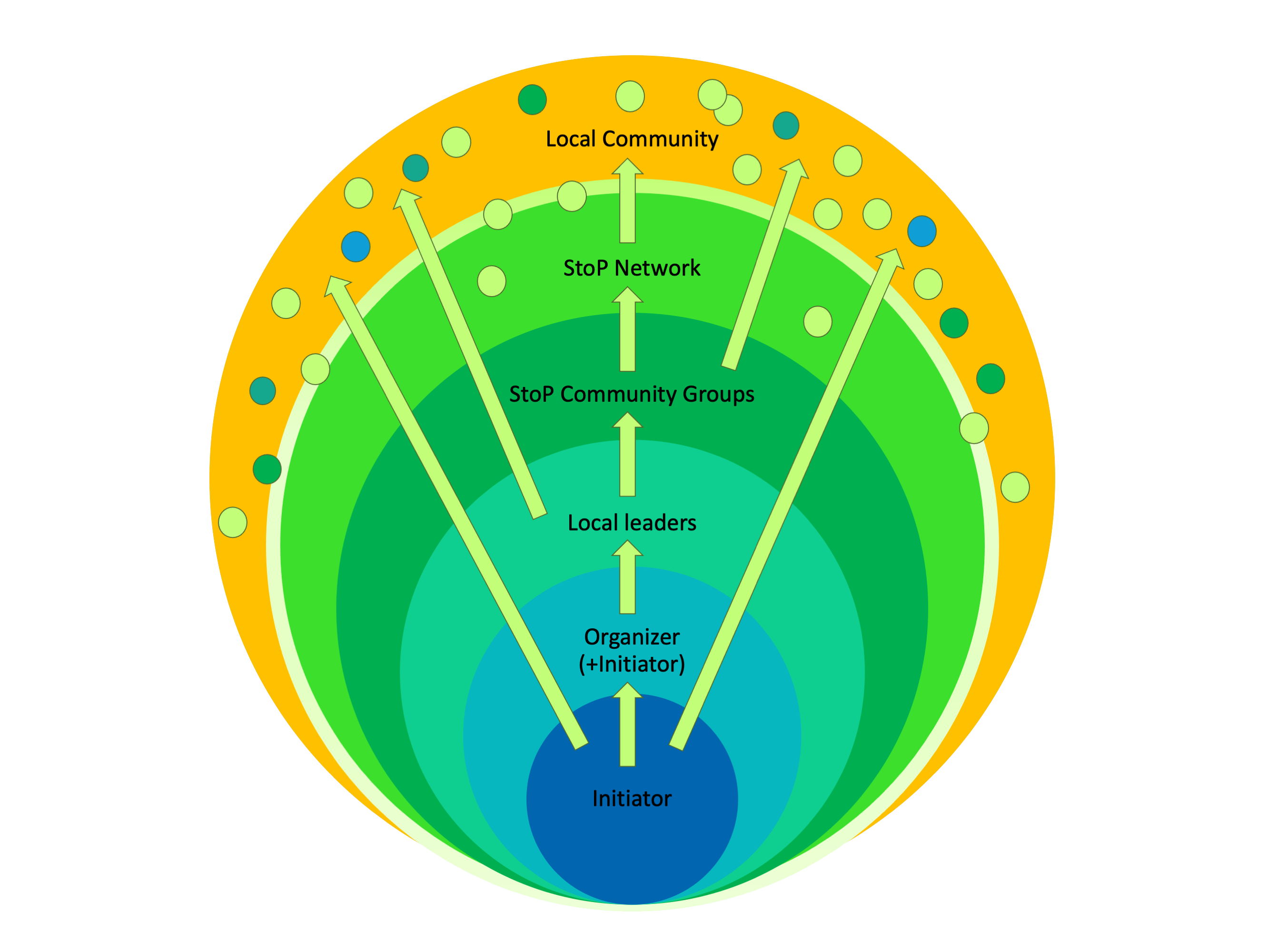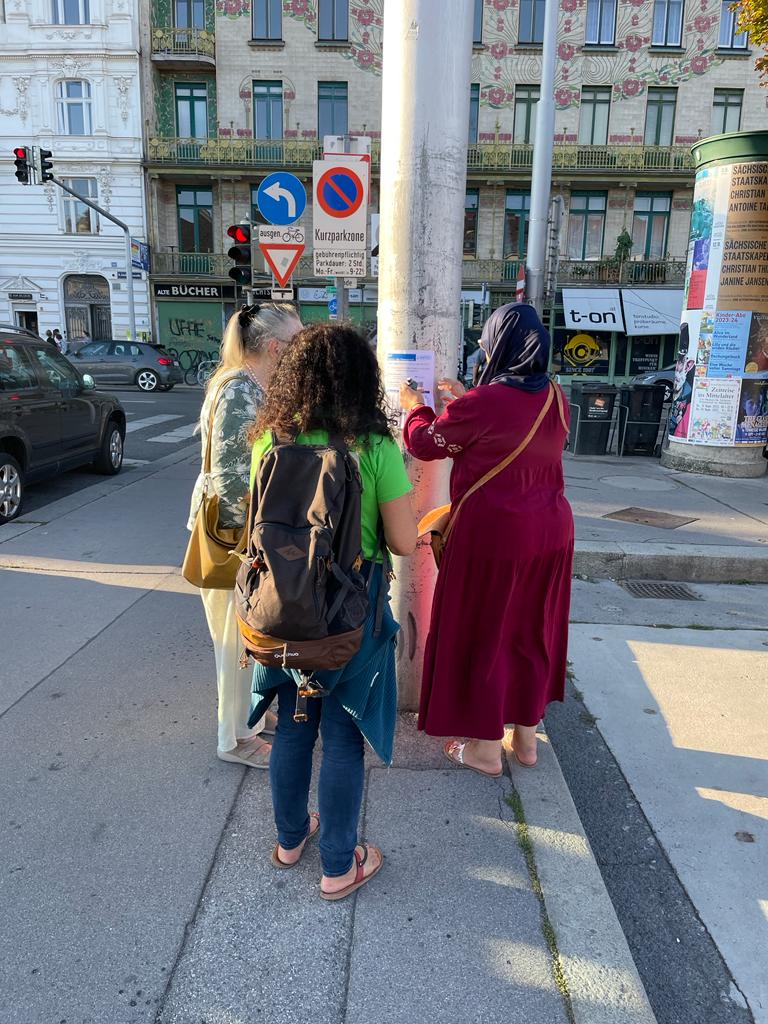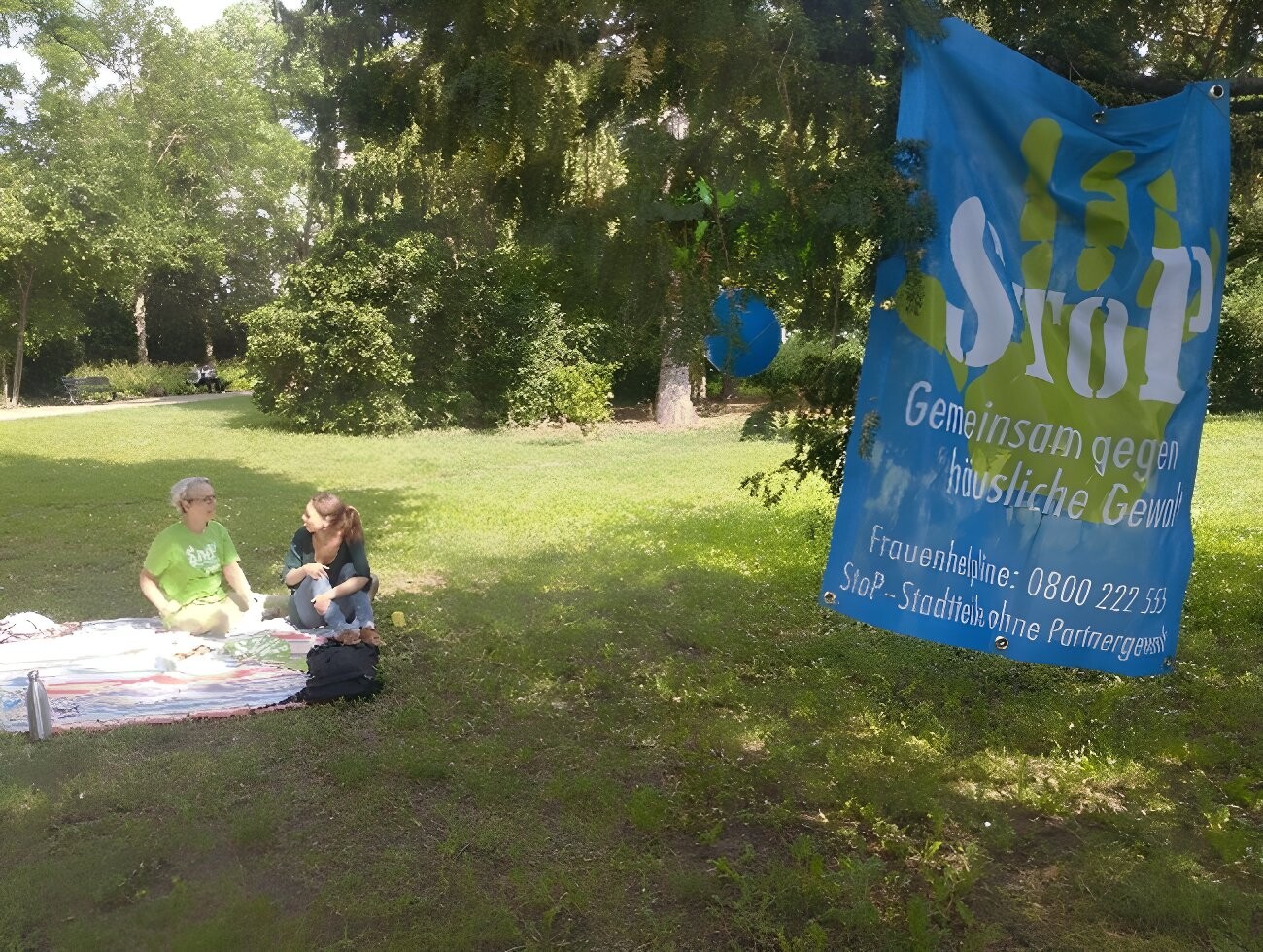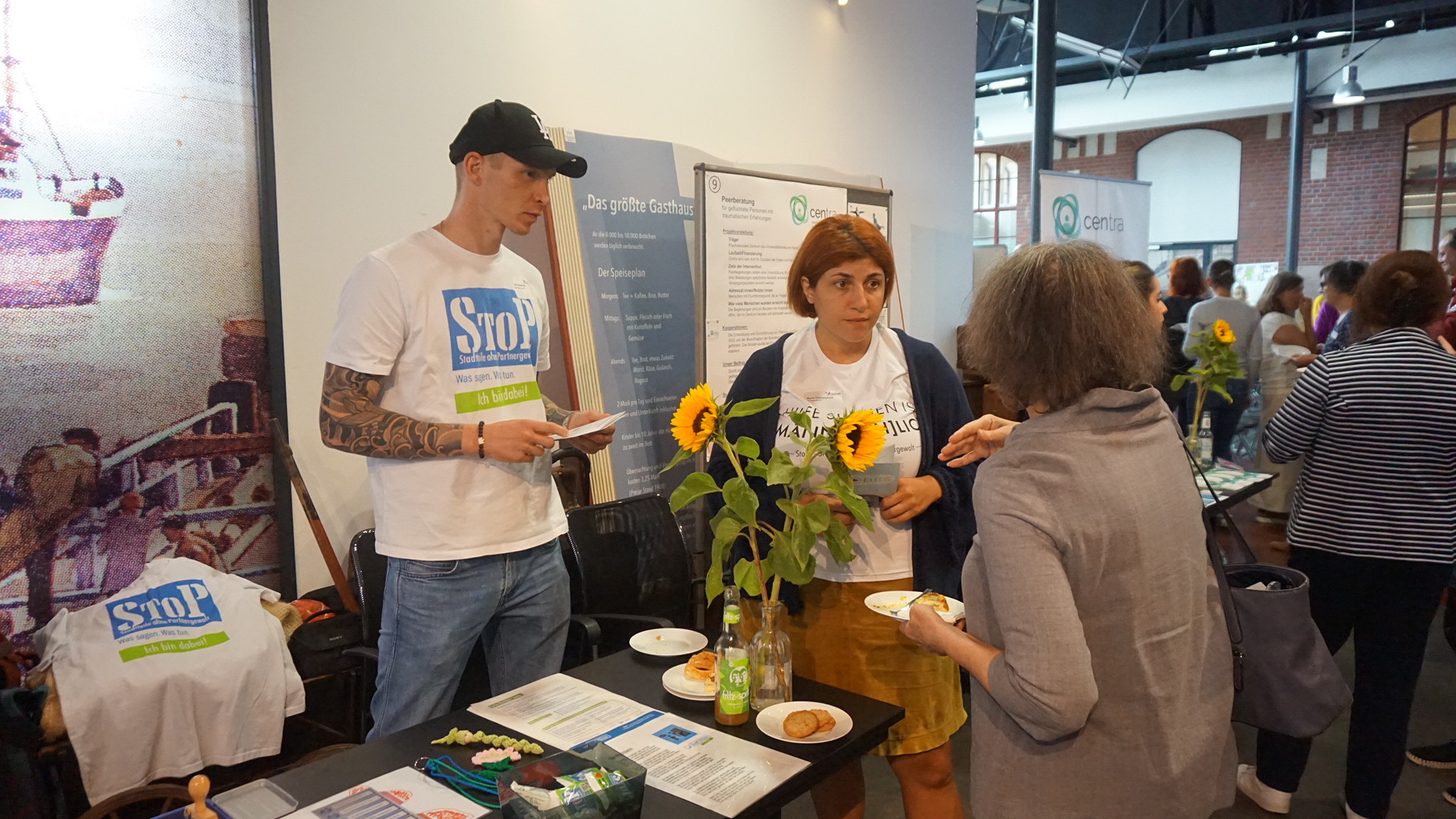This step serves several purposes. The initial organisers:
- get to know and understand the local community by gathering information about socio-economic status, ethnicity, values, norms, concerns, conflicts, constraints, resources and who is who, power dynamics and social networks, and try to find out about prevalence and attitudes towards gender and domestic violence
- identify formal and organic leaders and begin to build or strengthen relationships
- begin outreach and awareness-raising on domestic violence
- identify neighbours willing to become an active part of a StoP community group
Depending on how familiar the community organisers are with the neighbourhood, they may start by looking at publicly available statistics, local newspapers, church and association bulletins, or neighbourhood archives. Exploratory community walks, systematically observing and mapping what is seen and heard, are very revealing. Even if the organisers are insiders from the local community, the idea is to get a fresh picture, to rediscover. It is about understanding the people around you, their culture and relationships from their perspective, immersing yourself into the community but at the same time being curious, open, like a researcher doing an ethnographic study (Harrison 2020). To do this, you can use certain tools, such as the StoP Community Assement Questionaire.
During this research you will also find out about other organisations working in similar areas as StoP, with shared values and aims, e.g. violence prevention, social justice. Successful StoP work would be in their own best interests. This makes them natural allies for StoP work, whether they are grassroots NGOs or institutional actors such churches or as social services. Organisations are made up of people. And these are the people you want to be part of your network.
StoP Organising Process
- Initiators mobilise resources and employ organisers who (some-times together with the initiators) carry out community assessments and find/mobilise local leaders through one-to-one meetings, who then (some of them) become part of the local StoP network and recommend, mobilise, connect organisers to other community members.
- with the help of the organiser, organise themselves and form the StoP community group(s) that are at the heart of the further organising process. Together they form the local StoP community network. Members of the local community can participate and support the network on special occasions. In addition organisers might also contact community members directly.

The other important group are local leaders. They are people who have followers, know many others, are respected and listened to. Their thoughts and opinions are powerful. If they tell people to attend a meeting, they are much more likely to turn up than if you did. They may or may not be in a formal, official position, such as the head of a business association or one of the organisations mentioned above or an elected politician. But they can also be a hairdresser, a football coach, a neighbour who posts videos on social media, a lady who walks her dog around the neighbourhood every day, talks to people, knows their needs and joys. Sometimes they are called "organic" or "natural" leaders. As the pioneering community organiser Alinsky wrote:
“Knowing the identity of these natural leaders is knowing the telephone number of the people. Talking with these natural leaders is talking with the people.”
As it will most likely not be possible to talk to everyone and bring everyone together, it makes sense to identify these leaders. This is a key part of your assessment work.
The main tool for this is the 'one-to-one'. This is 'a face-to-face conversation in which two people develop a public relationship by sharing their stories, values, concerns, self-interests and visions' (close2home, 2015, p. 89). Talking to people using this established method of communication is at the heart of any organising process. Telling and sharing stories about the things that matter to us builds a common ground for trust and strong relationships, which in turn form the basis for commitment and joint action.
As we are looking for allies to stop domestic violence and support equal relationships, we will also introduce these issues in the one-to-one. Not in a general, abstract way, but we will share our motivation, our story. That doesn't mean that we have to talk about our personal traumas. But surely there is an experience, a vision, a story on a less intense level that fuels your commitment that you can share. The possibility that loving relationships or hurt in close relationships is something that people can relate to is real. And while this may not be directly relevant to everyone, if your one-to-one has been at least somewhat meaningful to your partner, they will be more open to further contact and collaboration. In addition, by putting intimate partner violence on the table, you will stimulate reflection, learn about the other's point of view and perhaps get information about the prevalence in the community.
At the end of each conversation, ask questions such as whether the person would be willing to attend a workshop/meeting on StoP, would bring other community members/neighbours, or could put you in touch with others to talk to. These one-to-one meetings will connect you to the community and form the basis of a StoP network and community groups.
If you have succeeded in forming an initial StoP network, the organisers and network members could start using another tool to widen their circle, find more leaders and mobilise neighbours from the local community: door-knocking. As this is a participatory action research tool, you could also use it as part of the actions of the StoP community groups. Door-knocking as a method can be used in Step 2, 3 and 4. You find more information in step 3.

Example
With StoP Steilshoop the paid professional organisers started with guided and individual walking tours, watched a video about the development of the neighbourhood, talked to people who have lived or worked here for 20 years or more, researched data, attended events in the neighbourhood. The initial StoP network (cf. Step 1) created a StoP logo and prepared some outreach material. As it was not only a group of two external organisers, employed by the Hamburg University of Applied Sciences, but also a long-time resident and three social workers from different institutions in the community, it was easy to identify who the organisers should make appointments with for the conversations. Twenty one-one-ones with people from the neighbourhood could be arranged, including representatives of various religious communities, civil society groups, and social and educational institutions. For this occasion, StoP created a special kind of one-on-one, combining relational and functional elements, because we felt we should also try to gather more information about our core topic. In each conversation we spoke about our idea of forming StoP community groups out of committed residents to lead the work for prevention and change and asked them to spread the word about the date of our first group meetings.
A full-day workshop for this target group was offered at the beginning and was well received with 16 participants. The focus was on learning about the forms, dynamics and causes of violence and what we can do about it. The feedback was very positive, people felt that we had given them useful information and created a situation where they could connect, chat and eat together.
References
-
Alinsky, S.D. 1946. Reveille for radicals. University of Chicago Press – Chicago, Illinois
-
Harrison, A.K.2020. Ethnography. In: Leavy, P. (ed.)2020. The Oxford Handbook of Qualitative Research. https://academic.oup.com/edited-volume/34283
Links
-
Dara Frimmer about organizing and story telling:
-
Very instructive and recommended additional tools you can find here:









